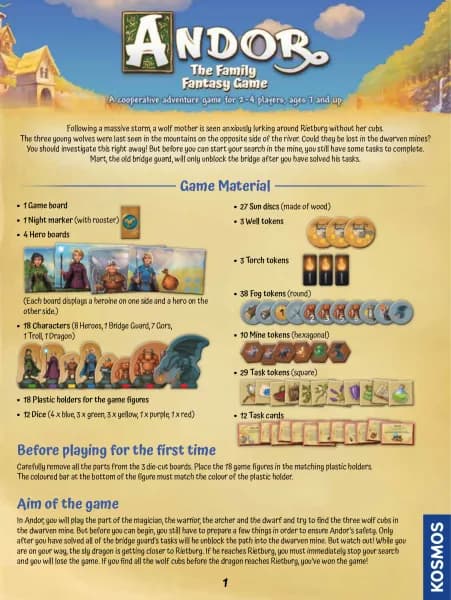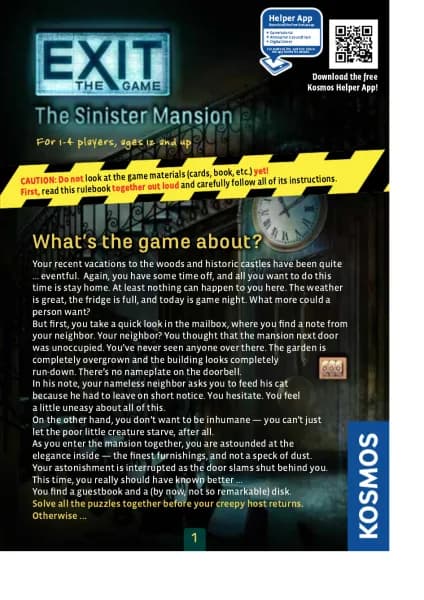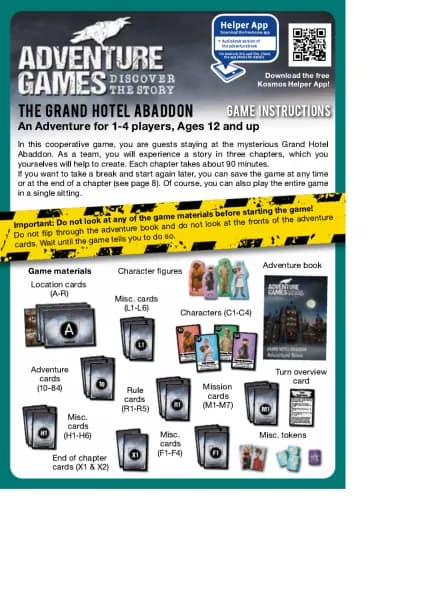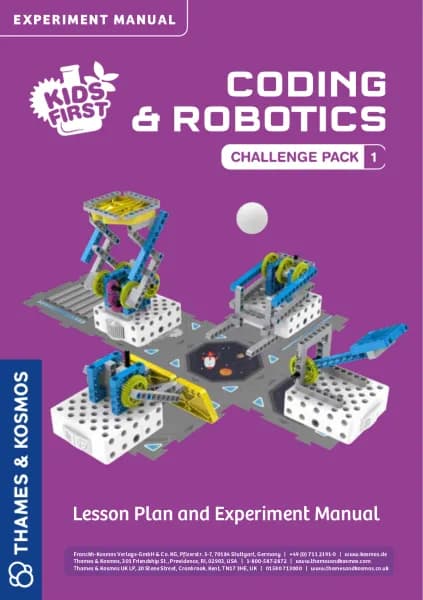Thames & Kosmos Physics Workshop handleiding
Handleiding
Je bekijkt pagina 14 van 19

stable
unstable
indifferent
wind energy
center
point of
sail
vehicle’s center
of gravity
base of support
tipping
line
wind energy
center
point of
sail
vehicle’s center
of gravity
tipping
line
Stable
Equilibrium
Unstable
Equilibrium
When Is a Body in Equilibrium?
It’s a tricky business to try to keep your balance while siing on top of a large ball.
But it’s not a problem siing on top of a large box. There are three ways a body
can be in equilibrium. Its state of equilibrium at any given moment depends on
what would happen if it were moved. If its center of gravity were to rise, then its
equilibrium is stable, if it were to drop, then it is unstable (wobbly). If its center
of gravity remains at the same level when the object is moved, then its state of
equilibrium is said to be indifferent.
When Is a Body Stable?
A body is stable if its center of gravity is located vertically above its base of support.
Then, it is in a state of stable equilibrium.
If its center of gravity lies vertically above its tipping line (the edge of the base),
then it will wobble or tilt. The slightest movement will make it tip over. But its
steadiness will also depend on the force needed to push it off balance, as well as on
the base on which it supports itself. In the case of a car, the four wheels resting on
the pavement form a rectangle. That is its base of support.
Tipping Force and Center of Gravity
A car will be most stable as it steers through a sharp curve when its center of gravity
is as low as possible and its wheels are as wide apart as possible. Then the tipping
force — that is, the force trying to throw the car from the curve (the centrifugal
force, see page 94) — has lile chance to get the upper hand.
The four-part rule for stability also applies to other vehicles, including the sail
car that you will be building yourself (instructions on page 14). In the case of a sail
vehicle, the tipping force is the wind, which exerts itself against the center of the sail
and tries to push the car past its tipping point.
The weight of the sail car, making its impact at the vehicle’s center of gravity
(located “in the air”), lies vertically above the triangular base of support and keeps
the sail car on the ground — its equilibrium is stable (upper picture).
If the wind is strong, the vehicle rises up on one of its rear wheels, the base of
support shrinks toward the tipping line (lower picture), and the equilibrium becomes
unstable. A really strong wind will tip the vehicle over. Modern sail cars reach
speeds of up to 160 km/h. But what exactly is meant by speed?
An object’s stability is greater if... ...its weight is greater.
...its base is larger.
...the force tipping it is weaker.
...its center of gravity is lower.
The balance or equilibrium of the motor box (with the baery in it) is stable when it rests flat
on its boom; when it rests on its corner edge, it is unstable; and when it rests on its corner
edge and shaft, it is stable again. What about when the baery is removed?
KEYWORD: EQUILIBRIUM
Equilibrium is the state of a body or physical system at rest or in unaccelerated motion in which the
resultant of all forces acting on it is zero and the sum of all torques about any axis is zero.
13
Earth Attracts Us
Bekijk gratis de handleiding van Thames & Kosmos Physics Workshop, stel vragen en lees de antwoorden op veelvoorkomende problemen, of gebruik onze assistent om sneller informatie in de handleiding te vinden of uitleg te krijgen over specifieke functies.
Productinformatie
| Merk | Thames & Kosmos |
| Model | Physics Workshop |
| Categorie | Niet gecategoriseerd |
| Taal | Nederlands |
| Grootte | 12112 MB |







